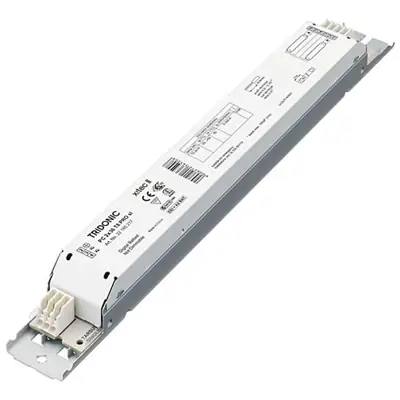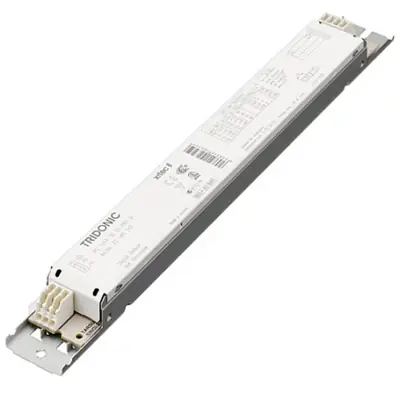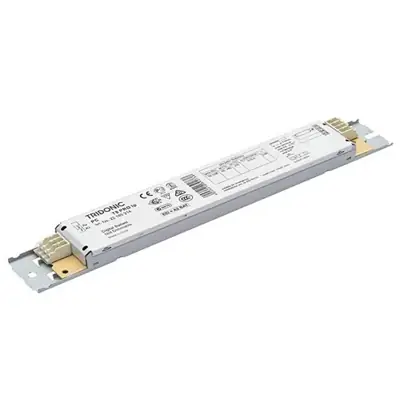Lighting Ballasts
Benefits at a glance:
• Control and regulate voltage and current supplied to the lamp during the start and throughout operation.
• Blasts have low installation costs and are perfect for installation in emergency lighting systems.
Lighting Ballasts are a type of control gear device required by electric-discharge light sources such as fluorescent or HID lamps to regulate any voltage and current supplied to the lamp during the start as well as throughout the device operation. They allow current to be controlled and regulated to suit the needs of the specific lamp type and provide sufficient voltage to start the lamps. Without a lighting ballast to limit a lamps’ current, a fluorescent lamp connected directly to a high voltage power source would very quickly, and uncontrollably increase current draw. This would result in the lamp overheating and burning out. The key role of the lighting ballast is to ensure that enough voltage is provided when switching on the luminaire. Another key purpose of a lighting ballast is to regulate current after the switch-on phase, in order to prevent the lamp from continuing to draw the full available voltage from the mains power throughout its usage. A lighting ballast is essentially an emergency module which can be used in either maintained or non-maintained systems. During non-maintained mode the emergency lighting power supply is used alongside ballasts to ensure safe lighting. Overall, lighting blasts have low installation costs, and are perfect for installation in emergency lighting systems, lasting up to 100,000 hours.
Showing all 12 results
-
Tridonic PC1/2X18TCPRO | 1/2x18W TC Pro High Frequency Ballast for Fluorescent Lamps
£12.50 ex VAT
£15.00 inc VAT
Add to basket -
Tridonic PC1X14-35T5PRO | 1×14-35W T5 Pro High Frequency Ballast for Fluorescent Lamps
£12.75 ex VAT
£15.30 inc VAT
Add to basket -
Tridonic PC1X24T5PRO | 1x24W T5 Pro High Frequency Ballast for Fluorescent Lamps
£12.75 ex VAT
£15.30 inc VAT
Add to basket -
Tridonic PC1X36 T8 PRO | 1x36W T8 Pro High Frequency Ballast for Fluorescent Lamps
£12.50 ex VAT
£15.00 inc VAT
Add to basket -
Tridonic PC2X58T8PRO | 2x58W T8 Pro Non Dimmable High Frequency Ballast for Fluorescent Lamps
£13.75 ex VAT
£16.50 inc VAT
Read more -
Tridonic PC2X80T5ECO | 2x80W T5 Eco Dimmable High Frequency Ballast for Fluorescent Lamps
£37.50 ex VAT
£45.00 inc VAT
Read more -
Lite-Plan HRN3 MODULE | 4W-36W 3.6V 4.5Ah Emergency Basic Lighting Invertor Module
£21.88 ex VAT
£26.26 inc VAT
Read more -
Tridonic PC3/4X18T8PRO | 3/4x18W T8 Pro High Frequency Ballast for Fluorescent Lamps
£13.75 ex VAT
£16.50 inc VAT
Read more -
Lite-Plan HRN4 MODULE | 4W-58W 4.8V 4.5Ah Emergency Basic Lighting Invertor Module
£19.94 ex VAT
£23.93 inc VAT
Read more
Showing all 12 results












